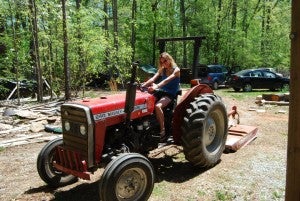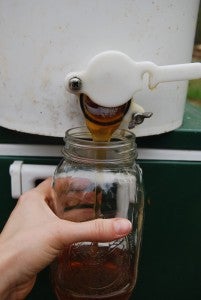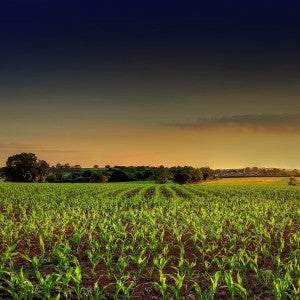Animal feed is at the heart of grain sustainability

My passion for improving the food system for the health of my family, my fellow citizens and our planet is in my genes.
My grandmother ran a natural foods business out of her kitchen in the 1950s, a time when the country was moving towards more processed food. My parents, who took me on annual Earth Day trash walks to pick up garbage alongside the road by our house, instilled in me a deep respect for the environment. My mother, a teacher, also started a composting and gardening program at her school that incorporates what the students grow into the school menus.
I draw on my family’s heritage in my life and work. That’s why I’m proud to be part of the team that helped Smithfield Foods establish and deploy a program to improve the sustainability of the grains they feed their hogs.
EDF and Smithfield don’t agree on everything, but we do agree that farmers growing animal feed have an important role to play in reducing the climate and water impacts of agriculture.
Here’s why a career focused on feed grain sustainability is a perfect fit for me – and why I believe that momentum in animal feed sustainability is a great way for protein companies across the supply chain to make tangible improvements to air and water quality.
 From high school sports to sustainable agriculture
From high school sports to sustainable agriculture
During high school and college, I was very involved in sports and became passionate about healthy eating. I read author Michael Pollan’s “The Omnivore’s Dilemma” and realized that our environment and the food we eat are one and the same. That’s when a light went off that I wanted to focus a career on making our food system more sustainable.
While earning a Masters of Environmental Management from Duke University, I met my now husband who shares a passion for sustainability. In fact, we built our own energy-efficient house — literally cutting down the trees and nailing each board. We now raise bees and chickens – my toddler son is obsessed with them and my EDF colleagues love the honey and eggs I bring into the office.
Inspiration from feed grain growers
In the course of my work with Smithfield, I’ve crossed paths with some of the farmers who sell grain to the company, many of whom hail from farm families. They, too, care passionately about the sustainability of farming and our food system.
That’s why growers are starting to embrace modern farming technologies such as optical sensors, used to determine the health of crops. The sensors help lead to less variability in the fields, produce increased yields and limit the amount of dangerous emissions (like nitrous oxide) released into the atmosphere due to excessive fertilizer use. I love when growers adopt new practices that are beneficial to their businesses, beneficial to people and wildlife, and beneficial to the environment.
Nearing a tipping point
Earlier this month, the U.S. Department of Agriculture’s Natural Resources Conservation Service announced $400,000 in funding for a Regional Conservation Partnership Program (RCPP) that will enable more growers to participate in Smithfield’s program.
And in 2015, Smithfield’s sustainability program engaged approximately 200 growers and changed fertilizer application practices on more than 75,000 acres. Although they have a long way to go, they’re on track to reach their goal. And they’ll get their faster with the newly announced support from USDA, which brings together Smithfield, EDF and several North Carolina growers’ groups and agriculture and conservation organizations to bring feed grain sustainability to scale.
But Smithfield is the only animal protein company seriously addressing grain sustainability. To make tangible changes at scale, we’ll need other protein companies to get involved in feed grain sustainability, too. That way our families and future generations can continue to enjoy safe and affordable bounties of food while preserving and improving the health of our environment.













